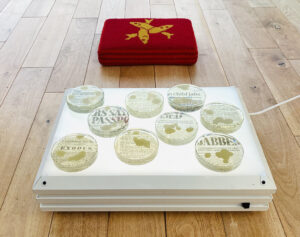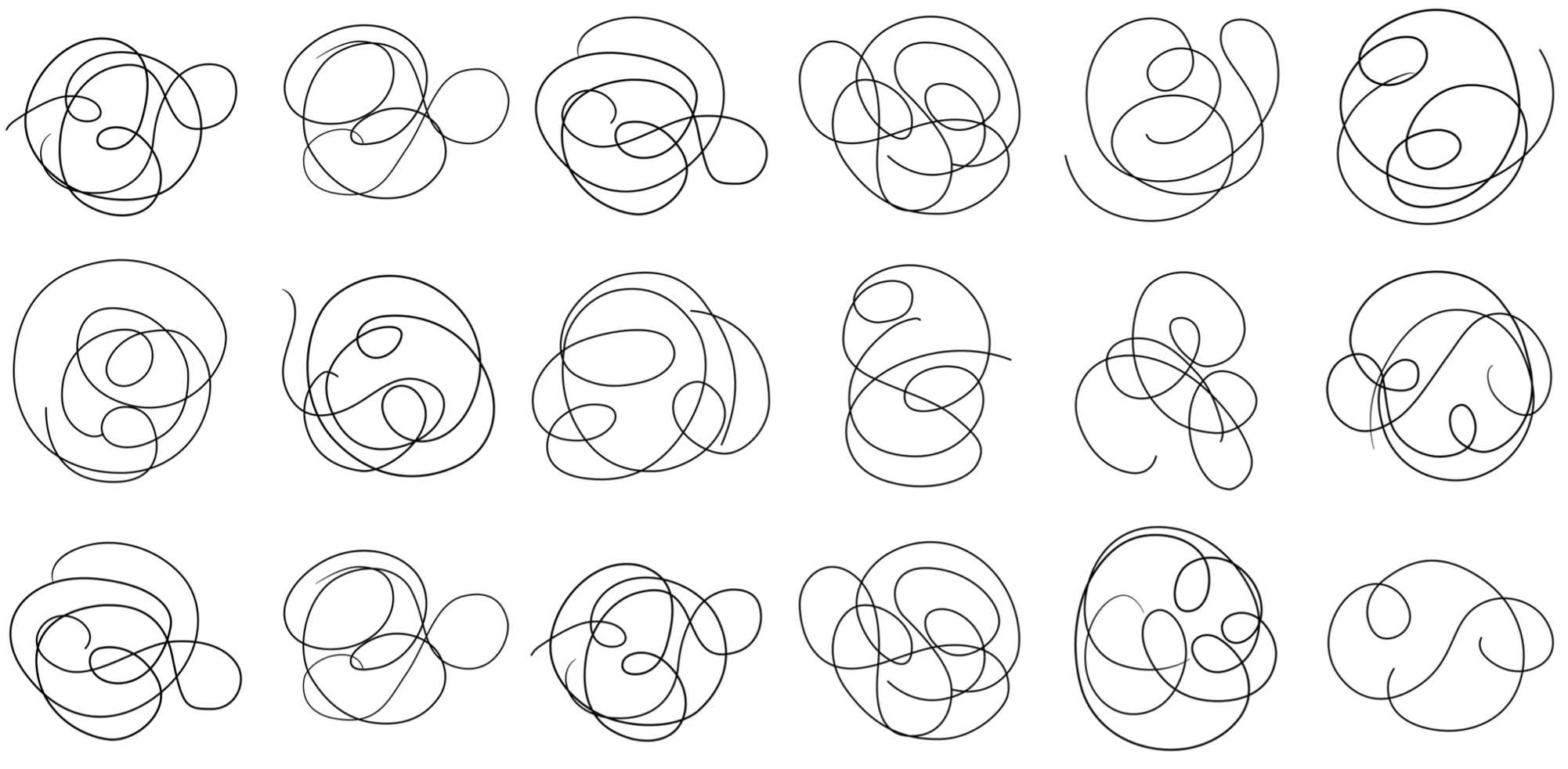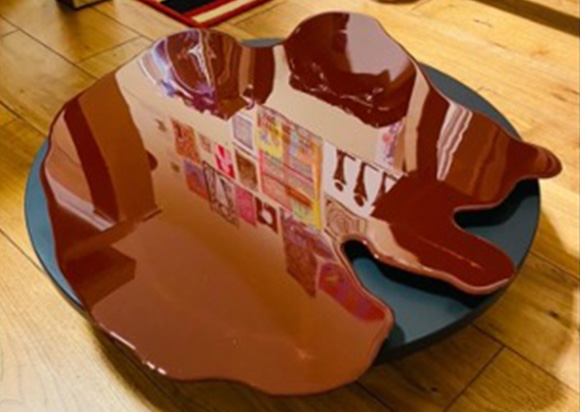
Stef Will
• 12 August 2021
Vagina Power?
I was really fascinated to find out more about the possible origins of the ichthys (fish) symbol, which you may have seen on Christian greeting cards or elsewhere.
 These days, the ichthys symbol is widely known as a Christian symbol, with sometimes a single fish being displayed and sometimes three fish in a quasi-circle. The latter is also the case in the vintage church prayer cushion I use in my mixed media work ‘At Faith Value’ (see below). More about why I decided to use this in that particular artwork in my next blog post (hint – not for its Cristian meaning…), but first things first.
These days, the ichthys symbol is widely known as a Christian symbol, with sometimes a single fish being displayed and sometimes three fish in a quasi-circle. The latter is also the case in the vintage church prayer cushion I use in my mixed media work ‘At Faith Value’ (see below). More about why I decided to use this in that particular artwork in my next blog post (hint – not for its Cristian meaning…), but first things first.


So, the fish symbol had already been used by very early Christians, for example as a code for secret meet up locations of worship. It may have been displayed on doors of meeting places, say. This was in the first centuries, in times of persecution of Christians by the Romans.
 The symbol is also said to have been used to recognise fellow Christians in those times. Trying to detect an ally, a Christian would draw the first half of the fish symbol in the sand. If the other person completed the fish drawing, they revealed themselves as a fellow Christian.
The symbol is also said to have been used to recognise fellow Christians in those times. Trying to detect an ally, a Christian would draw the first half of the fish symbol in the sand. If the other person completed the fish drawing, they revealed themselves as a fellow Christian.
However, much less known, the fish symbol had apparently already been used much earlier than that, namely in Paganism And this is the bit that really interested me. A fish symbol was said to have been used for many generations as a Pagan symbol of femininity, sexuality and fertility. And that’s because a simplified image of a fish, turned by 90 degrees, looks a bit like a woman’s vagina or womb. Can you see it?
 The two overlapping crescent moon shapes could potentially also be connected to the female monthly cycle. That’s why the fish symbol also apparently represented certain fertility goddesses So, the Cristian fish symbol essentially seems to have come from vagina power, which is fascinating to me.
The two overlapping crescent moon shapes could potentially also be connected to the female monthly cycle. That’s why the fish symbol also apparently represented certain fertility goddesses So, the Cristian fish symbol essentially seems to have come from vagina power, which is fascinating to me.
However, it is said that the Cristian authorities didn’t like that connection very much, so later tried to ‘clean up’ its roots and deny the original female genitalia meaning of their fish symbol. This apparently led to grievance amongst some feminists, as the perceived sexual symbol of femininity was felt by some to be ‘stolen’ by a highly andro-centric religion.
Anyway, that’s what I found out when researching this topic and it’s certainly a good story, but I will leave it to you to verify whether that was really the case or not. Don’t take my word for it…








